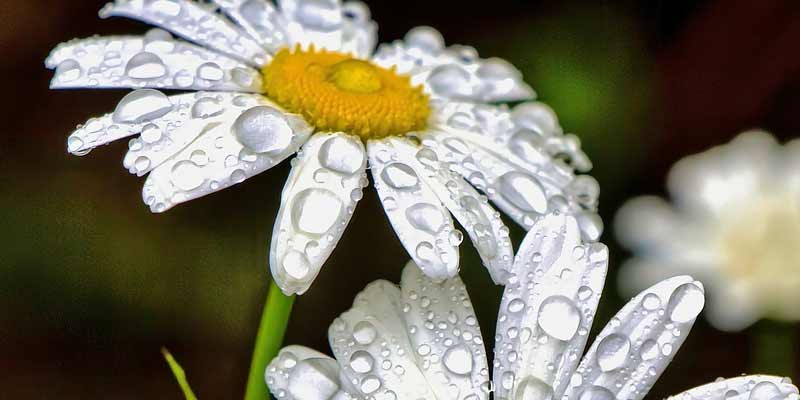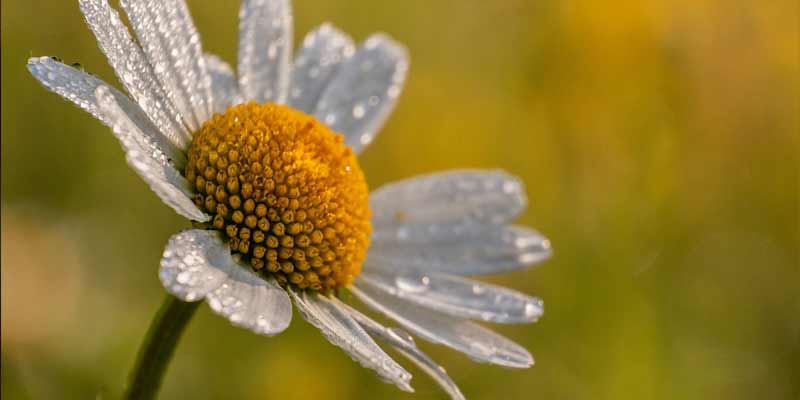With their charming simplicity and vibrant colors, daisies charm all who encounter them as an addition to a garden or indoor space. Many gardeners and flower enthusiasts have fallen for the resilience of these flowers. Although we recognize that daisies can flourish in diverse conditions, maintaining their health and vitality necessitates proper watering.
To ensure the longevity and continued bloom of daisies, one must understand their essential watering needs. A balance is crucial; an excess or deficiency in water can precipitate various issues like root rot, wilting, and subpar flowering. Therefore, mastering this equilibrium cultivates thriving daisies that not only beautify but also bring joy to your environment.
The Watering Basics
Grasping the fundamentals of watering practices for these resilient flowers is crucial before delving into how often to water daisies; indeed, several factors—such as environmental conditions and soil type—affect the frequency and volume of water these plants require.
Soil Type
Well-draining soil, which facilitates the flow of excess water away from their roots, fosters vibrant growth in daisies. Conversely, when roots encounter soil that retains water too much, they may suffocate and become susceptible to fungal diseases.
Daisies thrive in sandy or loamy soils; these soil types offer optimal conditions, adequate drainage, and a deterrent against waterlogging.
Climate and Environmental Conditions
Your daisies’ watering needs significantly depend on the climate in your region: hot and arid environments demand more frequent hydration, whereas cooler, even humid climates may necessitate less.
Variations in temperature and humidity levels may necessitate distinct watering requirements for indoor daisies compared to their outdoor counterparts.
Stage of Growth
To establish their root systems, newly planted daisies necessitate more frequent watering. After they have established themselves, daisies exhibit increased resilience and can endure short periods of drought.
Flowering daisies may require additional moisture to support blooming and maintain vibrant petals.
Container vs. Garden Planting
Container-grown daisies frequently experience quicker dehydration compared to their counterparts planted directly in the ground; this is particularly evident during hot weather, thereby necessitating a higher frequency of watering for these potted plants.
Natural rainfall confers benefits upon garden daisies, yet they might still necessitate supplemental watering during dry spells or prolonged periods of heat.
Determining Watering Frequency
Having explored the factors that influence daisy watering, we should now discuss the optimal frequency of watering for these charming flowers.
Soil Moisture Levels
To ascertain the optimal watering schedule for daisies, one must rely on a dependable method by evaluating soil moisture levels. Before proceeding with irrigation; plunge your finger into the soil, immersing it up to its first knuckle. Should you perceive dryness at this depth of penetration, then indeed it is time to administer water.
Do not adhere to a rigid watering schedule for daisies; instead, consider the fluctuating environmental conditions and soil moisture levels.
Observation
Observe your daisies’ appearance vigilantly: wilting or drooping foliage typically signifies inadequate water, a clear indicator that immediate watering is required.
Conversely, overwatering or poor drainage can manifest as yellowing or browning leaves. Therefore, to avert root rot and other issues related to water, you must adapt your watering practices appropriately.
Watering Techniques
Aim to evenly moisten the soil around the root zone when you water daisies; however, avoid excessive wetting of foliage. This action may promote both fungal diseases and infestations from pests.
Water the daisies in the early morning to minimize loss through evaporation. Additionally, this timing allows for foliage drying before evening which mitigates fungal infection risks.
Seasonal Considerations
Daisies, actively growing and blooming during the spring and summer months, might necessitate more frequent watering. This is to bolster their heightened metabolic demands.
As autumn and winter set in, daisies enter a dormant phase; therefore, it is advisable to decrease the frequency of watering. Permitting some dryness in the soil between each irrigation will ward off waterlogged conditions.
4 Tips for Optimal Daisy Care
Consider these tips—complementary to proper watering practices—for enhancing the health and vitality of your daisies:
1. Mulching
To enhance soil fertility, regulate soil temperature, and suppress weed growth, apply a layer of organic mulch around daisies; this will also decompose over time–a process that significantly retains moisture in the ground.
2. Fertilization
During the growing season, nourish daisies with a balanced, water-soluble fertilizer to foster healthy foliage and plentiful blooms; adhere to the manufacturer’s suggestions for application rates–as well as frequency.
3. Pruning
Regular deadheading and pruning: these practices not only prolong the blooming period of daisies but also maintain a tidy appearance. By removing spent flowers and damaged foliage, we encourage new growth; furthermore, this preventive measure inhibits disease spread.
4. Pest and Disease Management
Monitor the daisies for potential pest infestations: keep an eye out for aphids, spider mites, and snails. If you observe any signs of these pests – take action! Implement control measures immediately; use either organic pesticides or insecticidal soap to manage and reduce their populations.
Ensure the daisies remain free from debris; this will guarantee adequate air circulation. Consequently, it minimizes the risk of fungal diseases, specifically powdery mildew and leaf spot.
Conclusion
As much an art as a science, watering daisies necessitates careful observation; consideration of environmental factors, and responsive action. By comprehending the unique hydration requirements of these blooms and executing suitable practices, you can nurture flourishing plants that illuminate your garden or indoor space with their cheerful blossoms.
The key to successful daisy care is finding the perfect balance. Neither drowning them in excess water nor allowing them to thirst for lack of moisture, is the challenge. With your attention riveted on detail and a nurturing touch applied; you will savor not just their beauty but also resilience throughout seasons – an addition of natural splendor gracing your surroundings continuously.



Leave a Reply